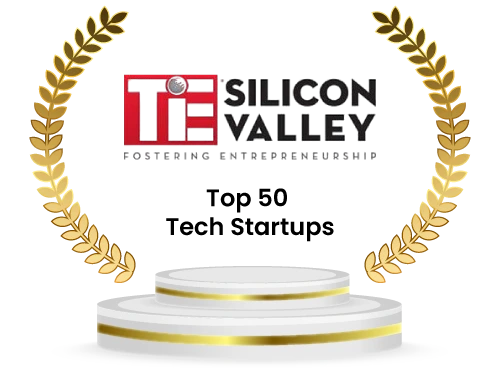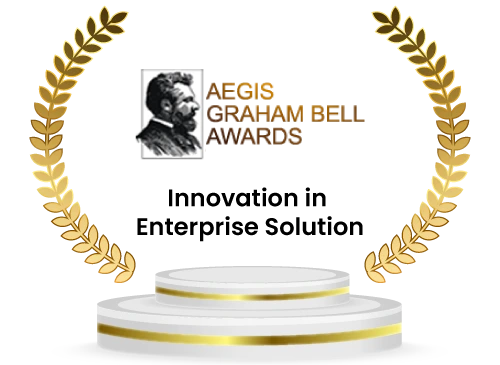Felicitation Meaning
Felicitation refers to the act of formally expressing congratulations or good wishes, especially to recognize someone’s achievement or success.
In the corporate context, felicitation is a structured way to appreciate employees for their notable achievements. Whether it’s a career promotion, completing a major project, winning an award, or marking work anniversaries, felicitation is about celebrating the moment and showing genuine congratulations.
It can be as simple as a public mention during a team meeting or as grand as an organized award ceremony. Either way, its purpose is clear, to honor, uplift, and motivate.
Felicitation Definition
Felicitation is the act of congratulating someone. It is the plural form of the noun felicitate, which means to congratulate or express joy or approval for someone's happiness or success.
Types of Felicitations in the Workplace
Following are the different Types of Felicitations in the Workplace:
1. Individual Felicitation
This involves recognizing a specific employee for their contribution, like completing a project, achieving sales targets, or receiving a certification.
2. Team Felicitation
Sometimes, a team effort deserves appreciation. This can be done during team town halls or department meetings with group shout-outs and tokens of appreciation.
3. Occasion-Based Felicitation
HR can felicitate employees on personal milestones like birthdays, work anniversaries, wedding announcements, or baby showers. These non-performance-based felicitations build emotional connections.
4. Retirement Felicitation
This is one of the most significant felicitation events. HR prepares a formal farewell, speeches, and tokens of appreciation celebrating the employee’s career journey.
Check Out Our Blog on 100+ Farewell Quotes for Your Workplace.
Why Felicitation Matters in Corporate HR
Many organizations focus on targets, numbers, and KPIs. But behind those metrics are people – people who strive every day to add value. When HR takes the time to felicitate employees, it creates a ripple effect of motivation, trust, and emotional connection.
Here’s why felicitation should be an integral part of HR strategy:
1. Boosts Employee Morale
A simple “Hearty congratulations!” or “Best wishes and good luck for your next role!” can go a long way in making employees feel valued. It shows that their hard work is not going unnoticed. This leads to higher job satisfaction and lower turnover rates.
2. Enhances Retention and Loyalty
Employees who feel appreciated are more likely to stay longer with the organization. Regular felicitation ceremonies, even if informal, help foster a sense of belonging. Recognized employees are more likely to feel valued and engaged with their work and the organization, improving employee retention rates and reducing the likelihood of them seeking opportunities elsewhere.
3. Encourages Excellence
When employees see their peers being felicitated, it sets a standard of excellence and encourages others to strive for similar recognition. This fosters a culture of continuous improvement and healthy competition.
4. Strengthens Team Dynamics
Felicitation of team accomplishments promotes camaraderie and strengthens team bonds. It promotes collaboration and a supportive environment where colleagues celebrate each other’s successes.
4. Promotes Positive Workplace Culture
A culture of appreciation inspires other employees to go the extra mile. It encourages healthy competition and collaboration. It reinforces positive behavior and motivates employees to continue performing at high levels.
6. Reinforces Organizational Values
Hearty congratulation ceremonies often highlight values and behaviors that align with the organization’s mission and goals. It reinforces these values among employees and strengthens the desired organizational culture.
How Felicitation Impacts the Workplace?
Following are the ways in which Hearty congratulations impacts the workplace:
1. Increased Productivity
Recognized employees are often more motivated to perform better, leading to increased productivity and efficiency in their work.
2. Improved Employee Satisfaction
Feeling appreciated and valued contributes significantly to overall job satisfaction. Happy employees are more likely to be engaged and proactive in their roles.
3. Enhanced Organizational Culture
Regular felicitation ceremonies create a positive atmosphere where achievements are celebrated. This contributes to a supportive organizational culture that values and rewards hard work and success.
4. Attraction of Talent
Organizations known for recognizing and rewarding their employees attract top talent. Potential employees are drawn to workplaces where their contributions are acknowledged, and a culture of appreciation thrives.
5. Reduced Conflicts
A culture of appreciation can reduce workplace conflicts. Employees who feel recognized and respected are less likely to engage in negative behaviors or office politics.
When Should You Felicitate Employees?
There’s no fixed calendar for felicitation or giving Hearty congratulations. It can be done anytime someone achieves something remarkable or when you simply want to say, “thank you.” Here are some common occasions:
Occasion | Felicitation Format |
Promotion | Congratulatory message + public appreciation |
Project Completion | Team celebration + certificates |
Work Anniversary | Personalized speech + memorabilia |
Retirement | Formal felicitation ceremony with heartfelt speech |
Employee of the Month | Public recognition + trophy or reward |
Personal Milestones | Email greetings + small token of best wishes |
Even small gestures like a personal note or a felicitation card or a Hearty congratulations hamper can have a big impact when delivered with authenticity.
How to Organize a Felicitation Program
Organizing a felicitation ceremony doesn’t always require a huge budget or fancy setup. What matters most is the thoughtfulness behind the gesture.
1. Define the Purpose
Are you celebrating tenure, performance, or personal milestones? Knowing the reason helps shape the tone and content of the felicitation.
2. Involve Leadership
Encourage team leads or department heads to say a few words. A felicitation speech from a senior leader holds more emotional weight.
3. Prepare a Felicitation Speech
A well-crafted felicitation speech goes a long way. It should highlight the employee’s journey, contribution, and the impact they’ve made.
Sample Speech Line:
“Today, we felicitate [Name] for their exceptional contribution to our success story. Your dedication inspires us, and we offer our heartfelt congratulations and best future wishes!”
4. Include Colleagues
Invite peers and team members to share messages or memories. A collaborative felicitation adds more warmth and authenticity.
5. End with a Token of Appreciation
Give a small gift, certificate, or personalized note. Pair it with words like “felicitate you for your success,” or “best wishes for the next chapter.”
Felicitation Speech: Tips for HR and Managers
Delivering a felicitation speech? Keep these pointers in mind:
- Be specific: Mention the employee’s exact achievement.
- Be personal: Share a memorable moment or anecdote.
- Be positive: Keep the tone upbeat and encouraging.
- Be concise: Keep it short, heartfelt, and to the point.
Example:
“Hearty congratulations, Priya! Your passion, work ethic, and team spirit are commendable. We are proud to felicitate you for your consistent performance and wish you continued success.”
How HR Can Integrate Felicitation into Company Culture
- Create a Recognition Calendar: Plan monthly or quarterly felicitation events.
- Set Up Internal Communication Channels: Celebrate achievements on Slack, email, or the HR portal.
- Launch an Employee Appreciation Program: Create categories like ‘Rising Star’, ‘Team Player’, or ‘Innovation Champion’.
- Share Moments on Social Media: With consent, post felicitations on LinkedIn or Instagram to amplify the culture of recognition.
When felicitation becomes a recurring part of workplace life, it transforms from a task to a tradition.
Zimyo’s Employee Self Service (ESS) allows HR and entire organization community to celebrate and appreciate employees, teams.
The Power of a Simple "Congratulations”
Sometimes, a simple gesture speaks volumes. A handshake, a smile, or a “Well done!” carries immense value, especially when it’s timely and sincere.
So, the next time someone in your organization shines, felicitate them. Say it out loud. Celebrate their win. Let them know their work matters. Because appreciation is more than an action – it’s a culture.
Frequently Asked Questions (FAQs)
What does felicitation mean in the workplace?
Felicitation in the workplace refers to formally recognizing and celebrating an employee’s achievements, milestones, or contributions.
How is a felicitation different from general appreciation?
While appreciation can be informal, felicitation is often more formal and structured, such as during events, speeches, or ceremonies.
What should be included in a felicitation speech?
A felicitation speech should include a brief introduction, the employee’s achievements, personal anecdotes, congratulations, and best wishes for the future.
How often should felicitation programs be conducted?
There’s no fixed frequency, it can be monthly, quarterly, or occasion based. Consistency is key.
Can felicitation be done virtually?
Absolutely! Virtual felicitation via video calls, e-certificates, and emails is just as impactful, especially in remote or hybrid teams.



